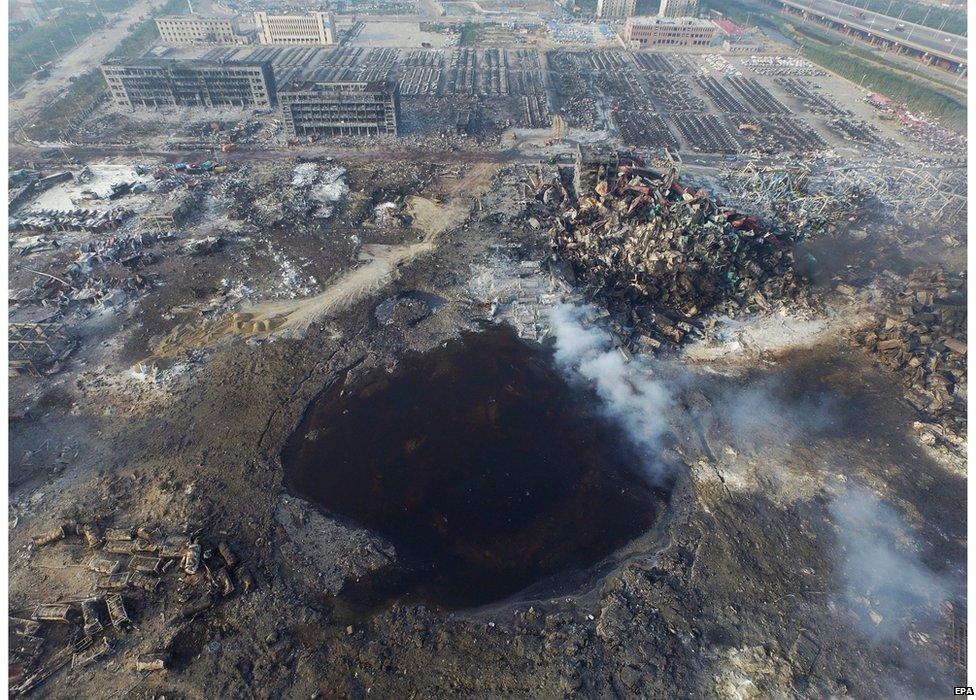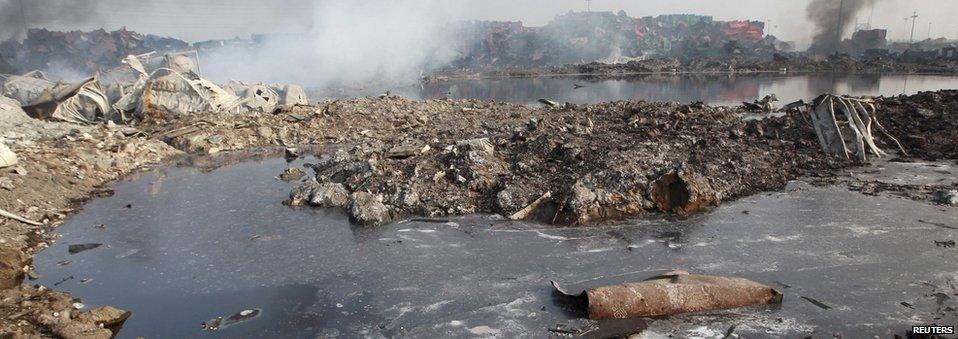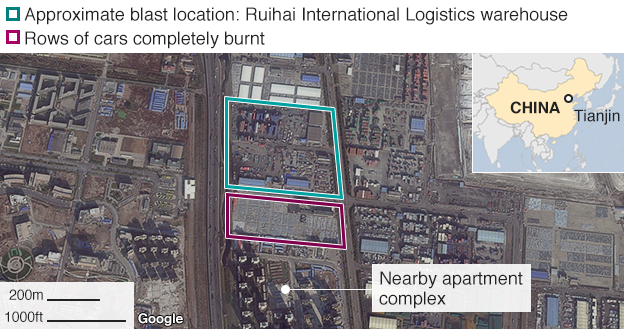China Tianjin explosions: Premier Li Keqiang visits scene
- Published

Mr Li met the wounded and also discussed safety operations with officials
Chinese Premier Li Keqiang has visited the victims of a major disaster at a chemical warehouse in Tianjin.
A series of explosions at the facility on Wednesday, claimed at least 112 lives. Ninety-five people, most of them firefighters, are still missing.
Mr Li met those who had been injured and displaced by the blasts.
A senior military officer said "several hundred" tonnes of the toxic chemical sodium cyanide had been identified at two locations in the blast zone.
Of the 721 people injured, 25 are in critical condition and 33 are serious.
The premier also met recovery teams and environmental monitors who are trying to secure the site, much of which was flattened by the explosions.
An investigation is under way to ascertain what triggered the disaster.

Residents have been demanding more information from the government

A suburb where the blast occurred has been described as a ghost town
Dozens of relatives of the missing and local residents have held a number of angry protests at a hotel used for official news conferences.
They say they have not received enough information from the government about what chemicals are at the site.
Meanwhile, a number of websites have been shut down for allegedly spreading unverified information about the blasts.
The state news agency Xinhua said 50 sites were accused of creating panic by publishing rumours.

What is sodium cyanide?

The chemical sodium cyanide is white crystalline or granular powder which can be rapidly fatal, external if inhaled or ingested, as it interferes with the body's ability to use oxygen.
It is mostly used in chemical manufacturing, for fumigation and in the mining industry to extract gold and silver.
It is soluble in water, and absorbs water from air, and its dust is also easy to inhale. When dissolved or burned, it releases the highly poisonous gas hydrogen cyanide, external.
Potent chemical mix behind blasts

Twenty-four of the victims had been identified by Sunday and experts are carrying out further DNA tests.
Troops equipped with chemical warfare protection entered the site of the blasts on Saturday, to deal with a dangerous cocktail of chemicals.
Officials had previously confirmed the presence of calcium carbide, potassium nitrate and sodium nitrate. Calcium carbide reacts with water to create the highly explosive acetylene.
Sodium cyanide was also discovered in large quantities at the site.
Greenpeace said tests in the area showed that water supplies were not severely contaminated with the cyanide, but that did not "disprove the presence of other hazardous chemicals".
The operators of the Tianjin facility have been accused of violating safety procedures.
Prosecutors are to set up a team to investigate any possible offenses related to the disaster, including dereliction of duty.
The Chinese government has also ordered officials to make nationwide checks on dangerous chemicals and explosives and to "crack down unwaveringly on illegal activities to ensure safety".

